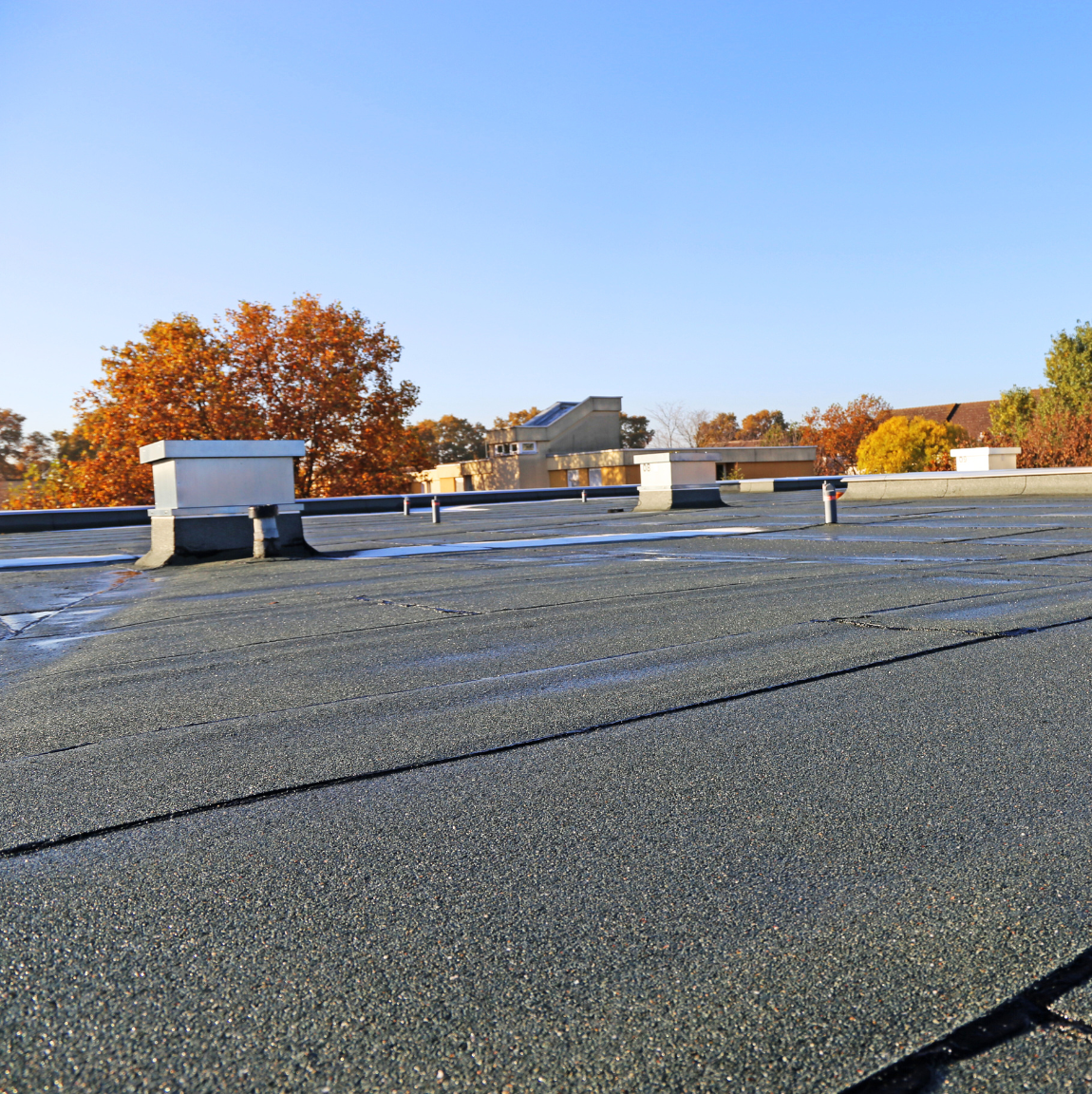Flat/Low-Slope Roof
Flat/low-slope roofing systems offer distinct advantages for both homes and commercial/industrial buildings. Whether you're designing a modern property or upgrading a traditional structure, choosing the right roof pitch is essential for performance and curb appeal.
Flat/low-slope roofing is a popular choice for commercial spaces and contemporary homes, offering a clean, low-profile look and usable rooftop space. Ideal for solar panels, HVAC systems, or rooftop patios, flat roofs are typically built with durable, weather-resistant materials like TPO, EPDM, PVC, or modified bitumen. They’re cost-effective and easy to maintain, especially in urban environments.
Professionally installed flat roofing systems deliver the right balance of form and function—ensuring your property stays protected, efficient, and visually appealing for years to come.
What is Flat/Low-Slope Roofing?
Flat roofing is a practical, low-slope roofing solution commonly used on commercial buildings, modern homes, and extensions. Built with durable, weather-resistant materials such as TPO, EPDM rubber, PVC, or modified bitumen, flat roofs are designed to handle heavy rain, snow, and temperature fluctuations when properly installed with adequate drainage systems. Unlike pitched roofs, flat roofing offers a streamlined appearance and creates usable space for HVAC units, solar panels, or rooftop patios. These roofs are lightweight, easy to access for maintenance, and generally more cost-effective to install and repair. Available in smooth, clean finishes, flat roofing can complement contemporary architecture while meeting functional needs. With professional installation and routine upkeep, flat roofs can last 20–30 years or more, offering a dependable, space-saving option for residential and commercial properties alike.

